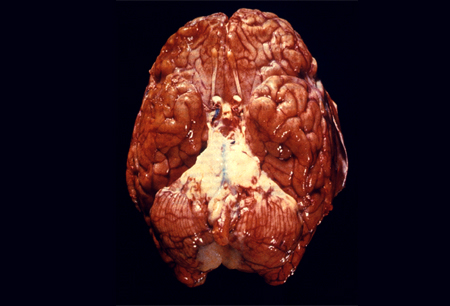Images and videos
Images

Bacterial meningitis in adults
Image provided by the US Centers for Disease Control and Prevention Public Health Image Library
See this image in context in the following section/s:

Bacterial meningitis in adults
Escherichia coli
CDC/Janice Haney Carr
See this image in context in the following section/s:

Bacterial meningitis in adults
National Early Warning Score 2 (NEWS2) is an early warning score produced by the Royal College of Physicians in the UK. It is based on the assessment of six individual parameters, which are assigned a score of between 0 and 3: respiratory rate, oxygen saturations, temperature, blood pressure, heart rate, and level of consciousness. There are different scales for oxygen saturation levels based on a patient’s physiological target (with scale 2 being used for patients at risk of hypercapnic respiratory failure). The score is then aggregated to give a final total score; the higher the score, the higher the risk of clinical deterioration
Reproduced from: Royal College of Physicians. National Early Warning Score (NEWS) 2: Standardising the assessment of acute-illness severity in the NHS. Updated report of a working party. London: RCP, 2017.
See this image in context in the following section/s:

Bacterial meningitis in adults
Gram-stained Streptococcus species bacteria
CDC Public Health Image Library
See this image in context in the following section/s:

Bacterial meningitis in adults
Staphylococcus aureus
CDC/Matthew J. Arduino, DRPH
See this image in context in the following section/s:
Videos
 Diagnostic lumbar puncture in adults: animated demonstration
Diagnostic lumbar puncture in adults: animated demonstrationHow to perform a diagnostic lumbar puncture in adults. Includes a discussion of patient positioning, choice of needle, and measurement of opening and closing pressure.
 Bag-valve-mask ventilation animated demonstration
Bag-valve-mask ventilation animated demonstrationHow to use bag-valve-mask apparatus to deliver ventilatory support to adults. Video demonstrates the two-person technique.
 Tracheal intubation animated demonstration
Tracheal intubation animated demonstrationHow to insert a tracheal tube in an adult using a laryngoscope.
Use of this content is subject to our disclaimer




